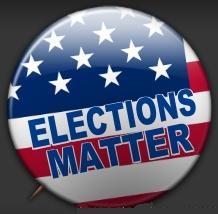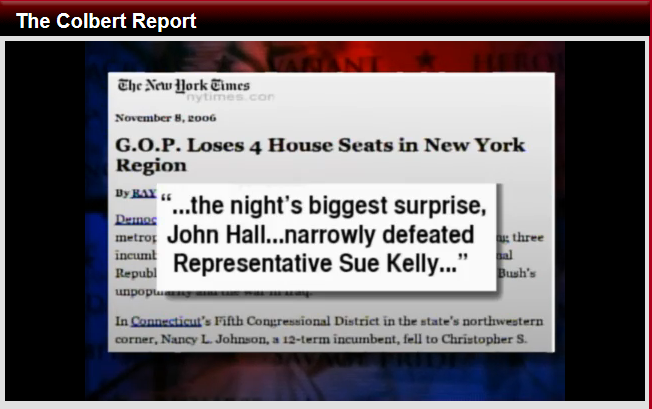The results of the last midterm congressional election, in 2010, were termed a “shellacking” by President Barack Obama. Some pundits said it was “not as bad as it could have been”, and also pointed to the 1994 midterm election when another first-term Democratic president lost control of Congress. That was little comfort for those of us who wanted to see President Obama’s agenda (our agenda) advanced.

The Democratic Party lost 63 seats in the House of Representatives, the biggest midterm loss since 1938 and the largest seat exchange since 1948. John “Big Gavel” Boehner became Speaker of the House and progress towards implementing the president’s agenda came to a screeching halt. The 112th Congress passed less legislation than the Do Nothing Congress that Harry Truman ran against in 1948. (The current Congress, the 113th is on pace to do even less).
The Congress that the 112th replaced, the 111th Congress was one of the most productive in recent history. Fifty years after President Harry S Truman first talked about universal health care, Speaker Nancy Pelosi, Senate Majority Leader Harry Reid and the Democratic majorities gave us the Affordable Care Act of 2010. That legislation affects the lives of every American by putting in place a structure to allow purchasing health insurance that is not just affordable but which provides minimum standards for coverage and does not punish policy holders for getting sick.
The “problem” with passing the Affordable Care Act was that in 2010 it put a big target on the backs of many Democrats who had been elected in the wave election of 2006. That year, another midterm election year, Democrats and other sentient beings were motivated to vote in order to create a firewall against the abuses of the Bush Administration. Democrats picked up 31 seats … and the majority … making Rep. Nancy Pelosi (D-CA) the first woman Speaker of the House of Representatives.
In early 2009, legislation addressing the economic collapse caused by Wall Street greed was passed and congressional leaders began discussions about how to address the crisis of 50 million Americans uninsured (and another 48 million under-insured). The Tea Party movement formed in spring 2009, purportedly to decry the bank bailouts (Trouble Asset Relief Program or TARP) and tax “burdens” (Taxed Enough Already). By summer, in a effort to grassroot itself in order to win elections, it developed the meme “Hands Off My Medicare”, misdirected at Democrats since it was the Republicans who, in their 2009 budget alternative, recommended eviscerating Social Security and Medicare to give tax cuts to the wealthiest 1%. The “clever” signs at their rallies, sponsored by FreedomWorks, Americans for Prosperity and Fox News, suggested that the participants were actually more upset that a black president had been elected: a president who they did not believe was even an American citizen and who stole the election via fraud perpetrated by the community action group, ACORN. That anger fueled a voting coalition that helped elect two governors in 2009, a senator in early 2010, and led to the 2010 midterm loss of our majority in the House of Representatives.
An honest assessment shows that some of the seats gained in 2006 were in traditionally Republican (or conservative leaning) districts and, as such, were going to be a challenge to hold onto in any event. One of those was New York 19, where Democrat John Hall defeated Rep. Sue Kelly (R) 100,119 votes to 95,359 that year.

(Click for Colbert Report “Bump” video … and patriotic music!)
In 2008, the presidential election year, Rep. Hall won re-election 164,859 to 116,120 over his Republican challenger, Keiran Lalor. In 2010, Rep. Hall voted with the Democratic majority for the Affordable Care Act and was defeated in November by the teaparty Republican candidate, Nan Hayworth, 109,956 to 98,766. It is important to note that Rep. Hayworth, toeing her party’s extreme ideological line by voting against disaster relief for her own constituents in the wake of Hurricane Irene, lost to Sean Maloney in 2012, another presidential election year, by 130,432 to 121,911 … 9,000 votes.
Let’s look at those numbers. In 2006, a midterm election, 195,000 people voted and John Hall won by 5,000 votes. In 2008, a presidential year, 281,000 people voted in the house race and he won by 38,000 votes. In 2010, when Rep. Hall lost by 11,000 votes, only 209,000 people voted in the house race. In 2012, another presidential year, 252,000 people voted in the house race. So there were 70,000 fewer voters in 2010 than 2008 (and we lost) and 40,000 more voters in 2012 than 2010 (and we won).
That simple analysis makes the answer to the question “what happened in 2010?” pretty easy: more people turned out to vote for Republican candidates than Democratic candidates. Basic arithmetic.
What caused the low turnout? Was it that the left-of-the-left did not get their ponies and stayed home? Was it because “protecting a congressional majority” is not as exciting as “electing a really cool president” and young people, notorious no-shows in midterm elections, did not vote in the numbers they did in 2008 (only 20.9% in 2010, down from 51% in 2008)? Or just that midterms are low turnout elections historically? Was it all of the above or some of the above running headlong into “the other side wanted it more”?
History tells us what has happened and what may happen again but it does not predict the future. In 2002, Republicans gained seats in the midterm following the 2000 “election” of George W. Bush. The current crop of teaparty congressmen may find that their own history, showing disdain for their constituents in the service of the national party’s agenda, just like Nan Hayworth did, may be more relevant history to base election predictions on (shutting down the government to please Ted Cruz was not popular except in the reddest of the red districts).
What really matters is this: in 2014 we need to have more of our voters than their voters turn out to vote.
Turnout is driven by motivation and enthusiasm. Republicans had hatred and fear of The Other, we had the reality that change is not quick or easy and that progress, especially after 30 years of anti-government rhetoric, is slow. President Obama was handed the Great Recession and two wars and needed to get the economy back on track before he could deliver on his campaign promises. And when what he was able to deliver (without a filibuster-proof Senate) did not include single-payer health care and the end to both wars on January 20, 2009, it was reported as a failure when in fact the successes of his first two years in office were pretty impressive.
We have a representative democracy and as such our participation comes from choosing who our representatives will be: there is only one way to choose them, by voting. And because our representatives are chosen every 2 years, when we don’t vote in the midterms we let those who are more motivated to thwart our agenda than we are to promote our agenda choose those who will represent us. We must vote in every election. Period.
Motivation, enthusiasm; they had it, the collective “we”, Democratic voters, didn’t. But enthusiasm is contagious. If we, the activist we, have it, how can we spread it to other Democratic voters? Moral Mondays, the take-to-the-streets movement started in North Carolina, is one way. Talking up the positives of the Democratic party and our agenda are another way. You can also remind people that the Republican agenda will, quite simply, make their lives suck more.
Think of it this way: if you were told that you could fix our country’s most serious problems by doing just one thing … taking a few hours out of one day every two years to vote … what would you say? You should say “Heck yeah, I can do that!!”.
So heading into 2014, remember to both Get Out The Vote (volunteer in your local Democratic party to call, canvass, and help get people to the polls) and Get Out And Vote.
Elections really do matter. When we vote, we win. And when we win, we can advance the Democratic agenda and then America wins.
10 comments